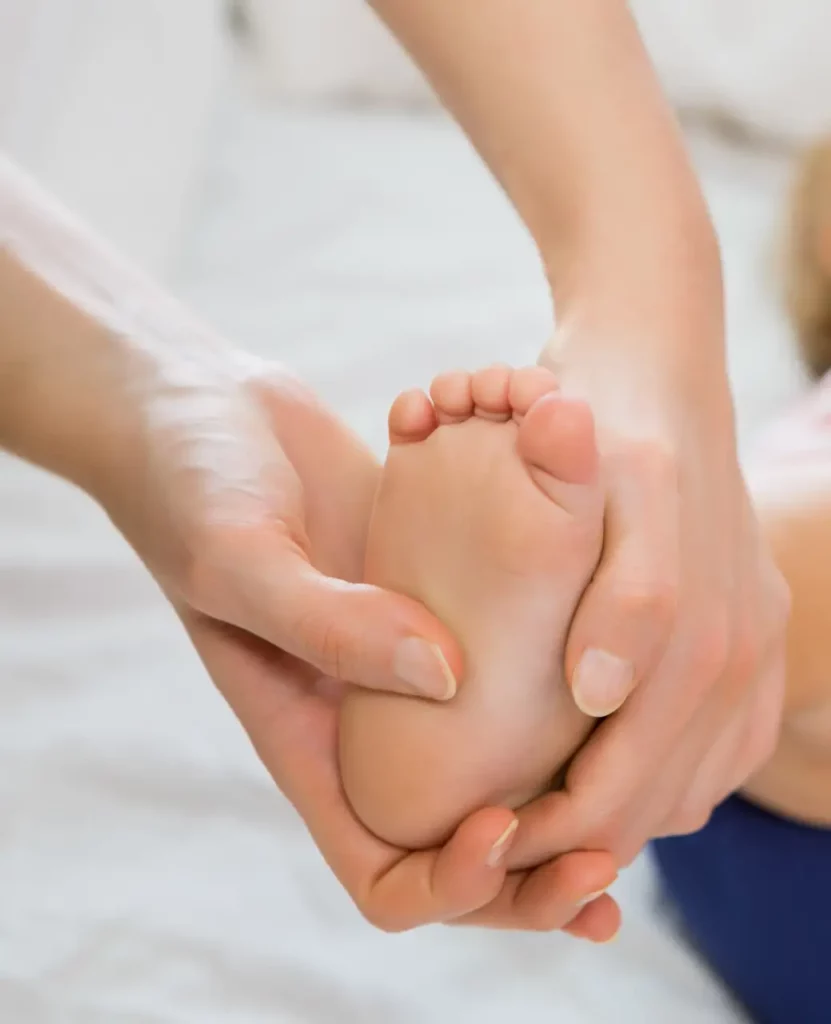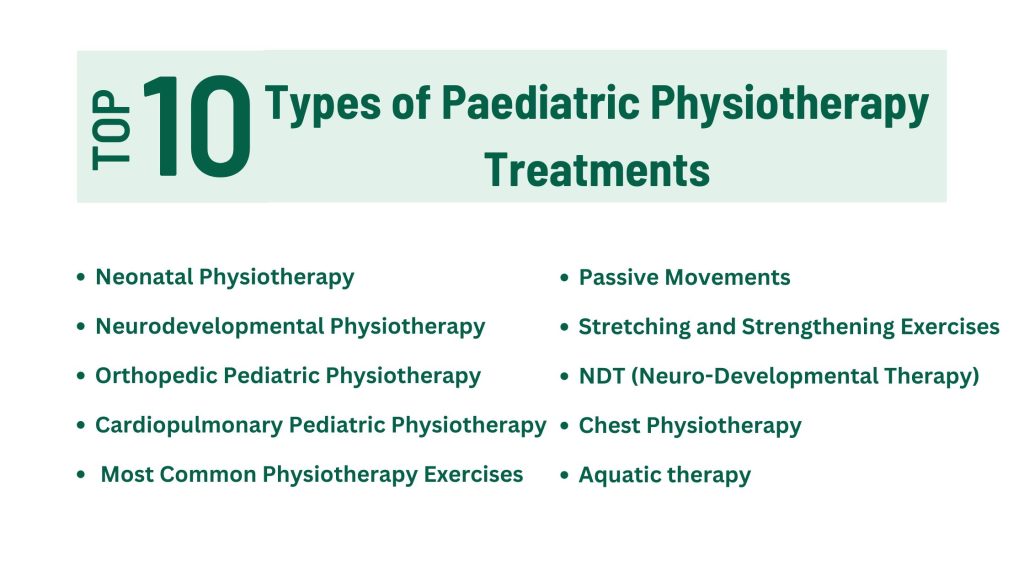
Written by
Angela Grace Varghese MPT (Paediatrics)
Physiotherapist
Did you know that your child’s body anatomy keeps changing till it reaches adulthood? As crazy as this may seem, this also means that treatment approaches for children are entirely different from that of adults. It’s true even for physiotherapy treatments. Although the principle remains the same for both populations, many techniques used in paediatric physiotherapy are modified and altered to work with children. Even now, new techniques are formulated and researched to bring out more effectiveness in therapy and help the child live a quality life.
So, let’s dive into the world of paediatric physiotherapy to get a better understanding.
What is Paediatric Physiotherapy?
Paediatric physiotherapy is a branch of physiotherapy that focuses on treating movement and movement-based disorders in children from 0-18yrs of age. A physiotherapist looks into the details of movement, like quality, range, pattern, and timing. The therapist will also look into balance, coordination, posture, gait disorders, motor milestones, and muscle performance. Based on the observation, an assessment will be done to find where the issue lies and what kind of treatment is best for gaining functional movement.
Read this blog to know about Physical Therapy Or Physiotherapy: All the Facts to Know
Do Physiotherapists Treat Babies?
Physiotherapists are trained in treating kids of all age groups, including newborn babies who require it. The little ones who fall in the category of “high-risk infants” often need some form of physiotherapy that plays a critical role, starting from their survival to achieving developmental milestones.
If you are pondering “who are high-risk infants?”- it refers to the newly born babies who could be premature or low birth weight babies or those infants who got an injury to their brain or have cardiopulmonary issues or any congenital malformations.
Physiotherapy Can Help
In the paediatric population, the main focus is to bring the child to his/her optimal functional independence in any given setting whether it be home, school, or any other community.
The physiotherapist will also aim at:
-
- Teaching correct movement patterns
-
- Achieving gross motor milestones
-
- Improve balance and coordination
-
- Improve Posture
-
- Improve trunk stability and mobility
-
- Improve gait pattern
-
- Parent education
Why Would a Child Need a Physiotherapist?
There is a list of conditions and disorders where physiotherapy is one of the main treatment protocols. It includes,
-
- Preterm babies
-
- Global developmental delay
-
- Cerebral palsy
-
- Congenital stroke
-
- Brain injuries
-
- Obstetric Brachial Plexus Injury
-
- Congenital torticollis
-
- Dystonia
-
- Postural conditions, including scoliosis and kyphosis.
-
- Disorders of the leg and foot
-
- Gait disorders
-
- Neuromuscular disorders like muscular dystrophy
-
- Spinal muscular atrophy
-
- Downs syndrome
-
- Other genetic disorders affect movement, balance, and coordination.
-
- Cardiopulmonary conditions like asthma, pneumonia, and respiratory distress.
Types of Paediatric Physiotherapy Treatments
For managing and treating various conditions, physiotherapists are equipped and skilled with different treatment techniques. What needs to be understood is that no two children will receive the same treatment. It is like making your own bowl of salad. Every salad bowl will differ and will often contain different combinations. Similarly, as each child comes with different concerns, the physiotherapy treatment protocol will differ for each child. In light of this, let us look into the types of physiotherapy in the paediatric population:
-
-
Neonatal Physiotherapy
-
These are a set of management protocols focusing on neonates to help them survive. This includes chest physiotherapy, positioning, orofacial stimulation, passive movements, and multimodal sensory-motor stimulation.
-
-
Neurodevelopmental Physiotherapy
-
This form of therapy is mainly focused on kids who have neurological disorders with gross motor developmental delay or kids with gross motor developmental delay without any other central nervous system insults. The techniques here aim to achieve gross motor milestones, manage spasticity, and improve balance and coordination. Some techniques include NDT(Neuro Developmental Therapy), CIMT (Constraint Induced Movement Therapy), Vojta technique, taping techniques, functional electrical stimulation, balance and coordination training, including Frenkel’s exercises.
-
-
Orthopedic Pediatric Physiotherapy
-
Kids who receive this service are largely those involved in sports, have congenital deformities, or have met with any injury to their muscles or ligaments. The approach is completely different, with strategies that include treating pain and spasms, improving strength and endurance, and correcting deformities and posture, with the aim of eventually bringing them back to their normal daily activities.
Here the treatment includes using machines to relieve pain and spasms, scar mobilization, stretching and strengthening of the muscles, endurance training, contrast therapy, and heat and cold therapy.
-
-
Cardiopulmonary Pediatric Physiotherapy
-
While the principles of the techniques used here remain quite the same as adults, the application change as this population is constantly growing. Techniques include chest physiotherapy, positioning, breathing exercises, respiratory muscle strengthening, and energy conservation techniques.
Oftentimes, a physiotherapy session will combine all these depending on the child’s needs.
-
-
Most Common Physiotherapy Exercises
-
There are many techniques that physiotherapists use on a daily basis. But more often, cooperation from the child becomes a determining factor while choosing different techniques.
Some of the widely used treatment techniques are:
-
-
Passive Movements
-
A passive movement is a form of technique wherein the therapist will perform anatomical and functional movements on the child without the child actively participating in it. This technique is mainly used to teach movements to the child, reduce spasticity, and prevent joint stiffness or deformity.
-
-
Stretching and Strengthening Exercises
-
This involves making the kid do exercises that will strengthen weak muscles and stretch tight muscles. A weight cuff, theraband, gravity, or the child’s own weight will be used for strengthening purposes.
Stretching exercises help to reduce tightness or spasticity. Dynamic stretching is usually preferred over passive stretching as that would yield more results.
-
-
NDT (Neuro-Developmental Therapy)
-
NDT is a hands-on technique used to correct and teach movements in children who lack movement. The fundamental point of NDT is to repeatedly expose the child to movements so that he/she can gain movement control and can learn to use a wide range of movements in his/her daily life.
-
-
Chest Physiotherapy
-
Chest physiotherapy is used when a child has a hard time clearing the secretion in the chest. It encompasses different techniques like percussion, vibration, postural drainage, and suctioning which is done step by step to allow effective clearing. This treatment is used in children with pneumonia, ARDS (Acute respiratory distress syndrome), acute bronchiolitis, and so on.
-
-
Aquatic therapy
-
If you want a picture of a pediatric session from a child’s perspective, it is like coming to a park where the therapist will have control over the activities that will be done. For a child, this may not always seem fun and exciting. This is where the water comes into play.
Aquatic therapy sessions are done in water involving a dash of fun and therapy, naturally motivating the child to participate in therapy. From a scientific perspective, water is ideal for cancelling gravity which would mean that performing movements in water will be far easier than on land.
Suggested Reading: Tips for Parents: Supporting Your Child’s Physiotherapy for children at home
Where Do Paediatric Physiotherapists Treat?
Paediatric physiotherapists are available in a wide variety of settings like
-
- NICU (Neonatal intensive care unit) & PICU (Paediatric intensive care unit)
-
- Outpatient setting
-
- Clinics
-
- Child health and development centers
-
- Schools
-
- Sports clubs and centers
-
- Individual homes
Conclusion
Just as a child develops and grows day by day, pediatric physiotherapy is growing. New techniques are constantly studied and developed to treat kids better and more effectively. For paediatric physiotherapists, this would mean constant updation of their knowledge and skills. As for parents, this would mean that your child is in safe hands. So no worries, we got your kiddo.



